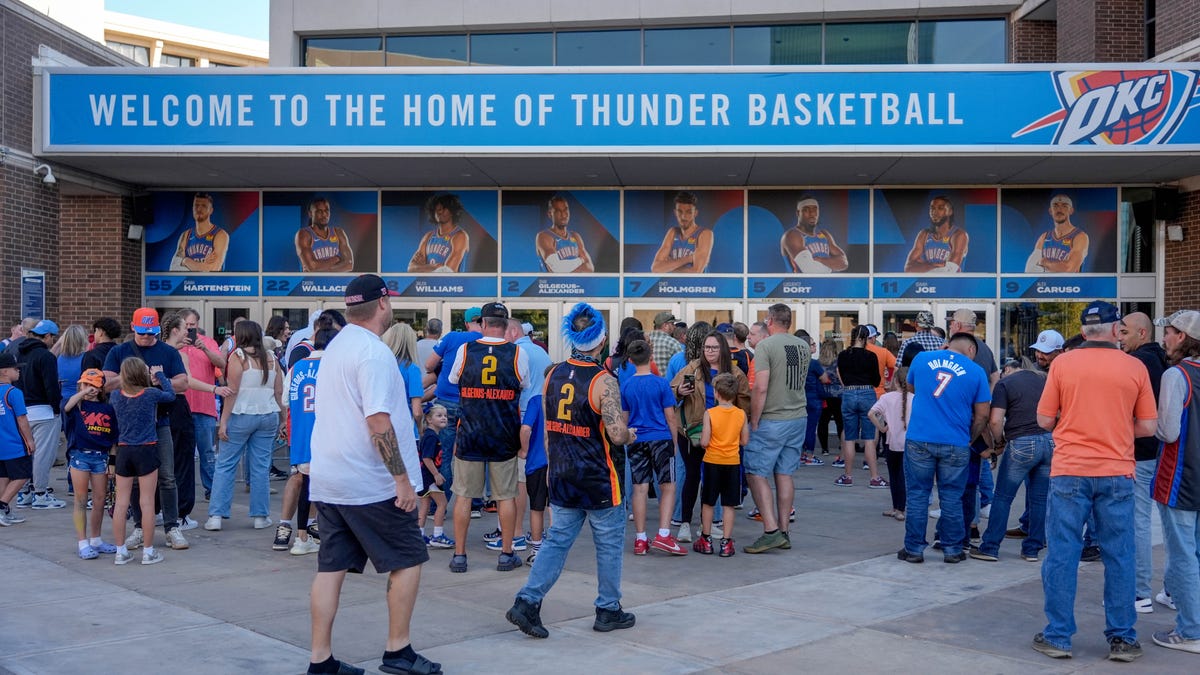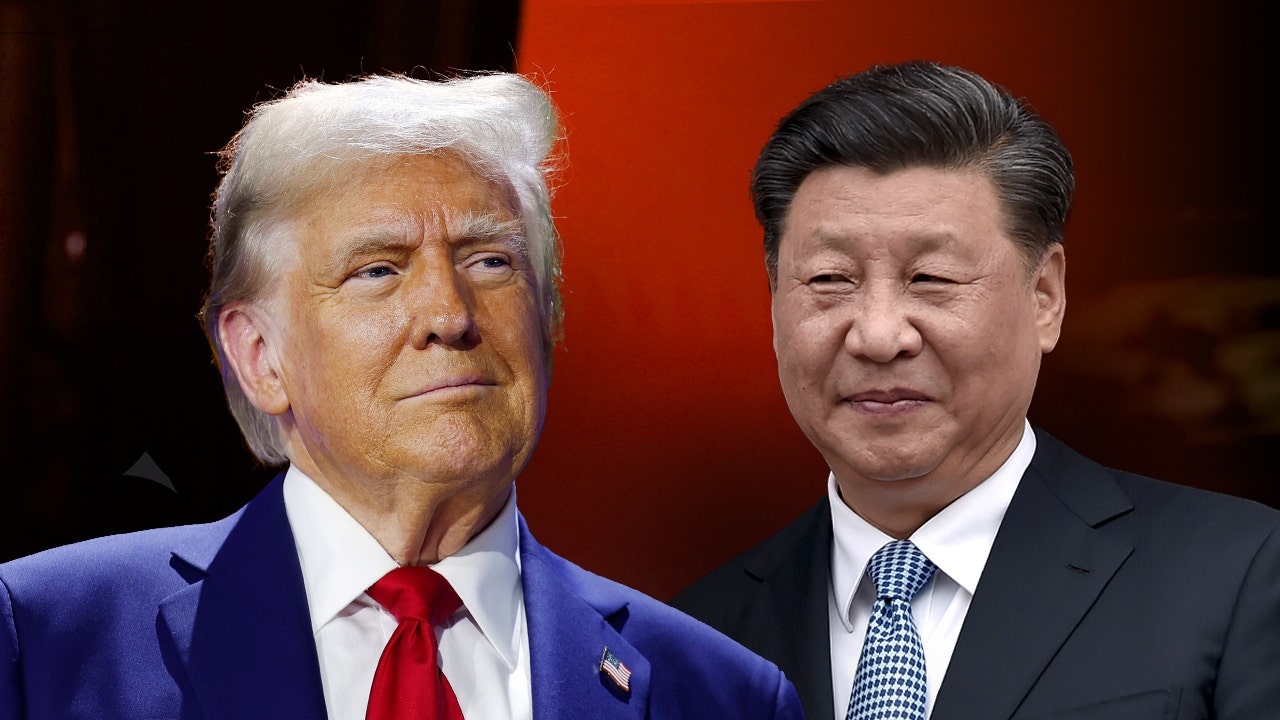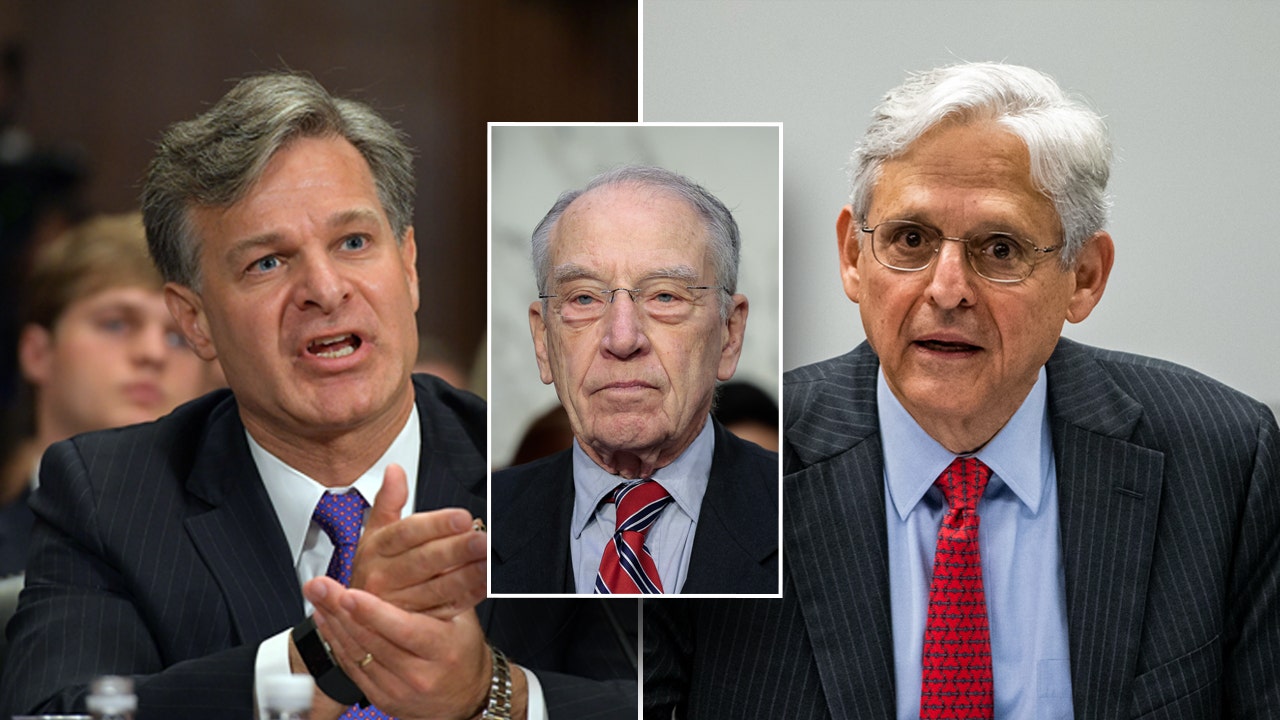News
Biden administration unveils first 10 drugs subject to Medicare price negotiations

Kubra Cavus | Istock | Getty Images
The Biden administration on Tuesday unveiled the first 10 prescription drugs that will be subject to price negotiations between manufacturers and Medicare, kicking off a controversial process that aims to make costly medications more affordable for older Americans.
President Joe Biden’s Inflation Reduction Act, which passed in a party-line vote last year, gave Medicare the power to directly hash out drug prices with manufacturers for the first time in the federal program’s nearly 60-year history. The agreed-upon prices for the first round of drugs are scheduled to go into effect in 2026.
Here are the 10 drugs subject to the initial talks this year:
- Eliquis, made by Bristol-Myers Squibb, is used to prevent blood clotting to reduce the risk of stroke.
- Jardiance, made by Boehringer Ingelheim, is used to lower blood sugar for people type 2 diabetes.
- Xarelto, made by Johnson & Johnson, is used to prevent blood clotting to reduce the risk of stroke.
- Januvia, made by Merck, is used to lower blood sugar for people with type 2 diabetes.
- Farxiga, made by AstraZeneca, is used to treat type 2 diabetes.
- Entresto, made by Novartis, is used to treat certain types of heart failure.
- Enbrel, made by Amgen, is used to treat rheumatoid arthritis.
- Imbruvica, made by AbbVie, is used to treat different types of blood cancers.
- Stelara, made by Janssen, is used to treat Crohn’s disease.
- Fiasp; Fiasp FlexTouch; Fiasp PenFill; NovoLog; NovoLog FlexPen; NovoLog PenFill, insulins made by Novo Nordisk.
The Medicare negotiations are the centerpiece of the Biden administration’s efforts to rein in the rising cost of medications in the U.S. Some Democrats in Congress and consumer advocates have long pushed for the change, as many seniors around the country struggle to afford care.
But the pharmaceutical industry views the process as a threat to its revenue growth, profits and drug innovation. Drugmakers like Merck and Johnson & Johnson and their supporters aim to derail the negotiations, filing at least eight lawsuits in recent months seeking to declare it unconstitutional.
The drugs listed Tuesday are among the top 50 with the highest spending for Medicare Part D, which covers prescription medications that seniors fill at retail pharmacies.
The 10 medicines accounted for $50.5 billion, or about 20%, of total Part D prescription drug costs from June 1, 2022, to May 31, 2023, according to the Centers for Medicare and Medicaid Services, or CMS.
The drugs have been on the market for at least seven years without generic competitors, or 11 years in the case of biological products such as vaccines.
Medicare Part D spent the most among those drugs on Eliquis at $16.5 billion, according to a CMS fact sheet. More than 3.7 million enrollees used the blood thinner.
The plan spent roughly $7 billion on Jardiance, $6 billion on Xarelto and $4 billion on Januvia.
Medicare covers roughly 66 million people in the U.S., and 50.5 million patients are currently enrolled in Part D plans, according to health policy research organization KFF.
What happens next
Drugmakers have to sign agreements to join the negotiations by Oct. 1. CMS will then make an initial price offer to manufacturers in February 2024, and those companies have a month to accept or make a counteroffer.
The negotiations will end in August 2024, with agreed-upon prices published on Sept. 1, 2024. The reduced prices won’t go into effect until January 2026.
If a drugmaker declines to negotiate, it must either pay an excise tax of up to 95% of its medication’s U.S. sales or pull all of its products from the Medicare and Medicaid markets.
The pharmaceutical industry contends that the penalty can be as high as 1,900% of a drug’s daily revenues.
After the initial round of talks, CMS can negotiate prices for another 15 drugs for 2027 and an additional 15 in 2028. The number rises to 20 negotiated medications a year starting in 2029 and beyond.
“I think it’s incredibly important to keep in mind that the negotiation process is cumulative,” said Leigh Purvis, a prescription drug policy principal with AARP Public Policy Institute. “We could have as many as 60 drugs negotiated by 2029.”
CMS will only select Medicare Part D drugs for the medicines covered by the first two years of negotiations. It will add more specialized drugs covered by Medicare Part B, which are typically administered by doctors, in 2028.
The drug price talks are expected to save Medicare an estimated $98.5 billion over a decade, according to the Congressional Budget Office.
Drugmakers’ legal challenges
Merck, Johnson & Johnson, Bristol-Myers Squibb and Astellas Pharma are among the companies suing to halt the negotiation process. The industry’s biggest lobbying group, PhRMA, and the U.S. Chamber of Commerce have filed their own lawsuits.
The suits make similar and overlapping claims that Medicare negotiations are unconstitutional.
The companies argue that the talks would force drugmakers to sell their medicines at huge discounts, below market rates. They assert this violates the Fifth Amendment, which requires the government to pay reasonable compensation for private property taken for public use.
The suits also argue that the process violates drugmakers’ free speech rights under the First Amendment, essentially forcing companies to agree that Medicare is negotiating a fair price.
They also contend that the talks violate the Eighth Amendment by levying an excessive fine if drugmakers refuse to engage in the process.
The suits are scattered in federal courts around the U.S. Legal experts say the pharmaceutical industry hopes to obtain conflicting rulings from federal appellate courts, which could fast-track the issue to the Supreme Court.
Some drugmakers have confirmed their intention to bring their legal battle to the nation’s highest court.
“As we look forward, we’re going to take this to the fullest, which means we’ll take it through District Court and, if need be, into Circuit Court and ultimately to the Supreme Court,” Merck CEO Robert Davis said during an earnings call earlier this month. “So, really that’s the strategy.”
Meanwhile, the Biden administration has vowed to fight the legal challenges.
Biden and his top health officials have embraced the lawsuits as evidence that they’re making progress in the fight to cut drug prices.
“Big Pharma doesn’t want this to happen, so they’re suing us to block us from negotiating lower prices so they can pad their profits,” the president said in a speech at the White House last month. “But we’re going to see this through. We’re going to keep standing up to Big Pharma.”

News
It’s been a rollercoaster few years for Six Flags. Can Travis Kelce help?

Kansas City Chiefs tight end Travis Kelce says he grew up going to Six Flags parks and wants to help make them special for the next generation of families.
Reed Hoffmann/AP
hide caption
toggle caption
Reed Hoffmann/AP
Travis Kelce, the Kansas City Chiefs tight end and fiance of Taylor Swift, sparked jokes and hopes this week when he announced his investment in the embattled amusement park company Six Flags Entertainment.
The football star, alongside two corporate executives, teamed up with JANA Partners to purchase a combined stake of about 9% of Six Flags’ shares, making them one of its largest shareholders, according to Tuesday’s news release.

JANA Partners is an activist investment firm, meaning it buys a substantial stake in a company’s equity in order to push for changes — both operational and managerial — it believes will benefit that company.
“Couldn’t pass up the opportunity to continue the tradition and make Cedar Point and Six Flags even more special for the next generation of families!” Kelce wrote on Instagram. “So crazy to even imagine this is real, but you gotta love it when life comes full circle.”
Kelce also shared home video clips of himself as a child enjoying the rides at Cedar Point, the 364-acre amusement park in Sandusky, Ohio, that he and his brother (and retired pro footballer) Jason grew up going to every year, as the two enthusiastically reminisced in an episode of their New Heights podcast. Kelce, who grew up in a suburb of Cleveland, calls himself a “lifelong Six Flags fan.”
Cedar Point’s former operator, Cedar Fair, merged with Six Flags in 2024 to become the largest amusement park operator in North America, touting 42 parks across the U.S., Canada and Mexico.

At the time, many amusement parks — and Six Flags especially — were struggling to increase attendance in the wake of the COVID-19 pandemic. Park analysts and enthusiasts hoped the merger would lower ticket costs, raise revenue and make it more competitive against industry heavyweights like Disney and Universal.
But that hasn’t been the case, says Dennis Speigel, CEO of the consulting firm International Theme Park Services.
“As this merger occurred, I think the due diligence was probably done a little too quickly and it had a lot of flaws in it,” he told NPR. “And then it was also impacted by what I call the external factors: weather, economy, uncertainty of what’s happening in geopolitical areas.”
Six Flags now has $5.3 billion in debt. Its CEO, Richard Zimmerman, is set to step down by the end of the year, after it reported a net loss of $100 million for the second quarter of 2025 and combined attendance down 9% year-over-year. It is shuttering one of its parks — Six Flags America in Bowie, Md. — in early November and is expected to close another in Santa Clara, Calif., in 2027.

Speigel is hopeful the new shareholders will get Six Flags back on track. And while he was initially surprised to learn of Kelce’s involvement, he says it makes sense because “he’s at the zenith of his career in football … and in love.”
“Having a name like that be associated with Six Flags at this point in time, when they’ve gone through quite a few years recently of negativity, speaks well to their future and what they’re looking to do,” he says. “Obviously, he’s a younger person. He speaks to the teens, the young adults and the young adults with families. And that’s the Six Flags audience.”
Kelce’s fame — and high-profile love story — have boosted businesses before. Swift is credited with increasing female NFL viewership and ticket sales as their relationship unfolded. And, in recent days, his social media announcement has been flooded with fans’ pleas for a Swift-themed park, or at least a rollercoaster.
Six Flags’ rocky ride
Six Flags opened with the “Six Flags Over Texas” park in 1961, and for years was one of America’s most iconic theme park companies (along with Disney). But for the last decade, Speigel says, it has been “a ship at sea without a captain.”
“I would have to say [out of] the top five or six operators during the last couple of years, Six Flags has suffered the most,” he says.
Six Flags has had four CEOs since 2015.

It shifted its pricing strategy in 2022 to target a more affluent demographic, confusing and alienating core customers in the process. And in recent years, a number of high-profile ride malfunctions have stranded and even injured visitors. This year, extreme temperatures and economic uncertainty drove attendance down even further.
“To see Six Flags have fallen off the precipice and down to where it is now, it’s sad,” Speigel says. “And everybody in the industry, competitors and alike, are all rooting for their return and their comeback.”

Visitors arrived to a “Welcome Back” sign at Six Flags Magic Mountain in Valencia, Calif., when it reopened after the COVID-19 pandemic in April 2021.
Jae C. Hong/AP
hide caption
toggle caption
Jae C. Hong/AP
What might change?
JANA Partners said in its announcement that it plans to engage with Six Flags’ management and board of directors “regarding opportunities to enhance shareholder value and improve the guest experience.”
NPR has reached out to Jana Partners for more information about its goals but did not hear back by publication time.
The Wall Street Journal reports that the investment firm wants to “modernize technology, refresh leadership and evaluate a potential sale as ways to boost the company’s share price.”
In a statement shared with NPR, a Six Flags spokesperson said it appreciates the perspectives of shareholders and takes their feedback seriously.
Speigel says Six Flags’ debt could force the new investors to take “some drastic measures,” like selling some of its parks, either to commercial real estate or even private equity groups. And he stresses that foot traffic is key in the industry.

“We live on repeat visitation, and repeat visitation is driven by capital improvements, new rides and attractions, dark rides, the new technologies,” he says. “So we have to hopefully see the growth from that.”
Speigel says even though U.S. amusement parks may not be experiencing the same rate of growth that they did several decades ago, they still attract some 400 million visitors each year — most of whom don’t care who owns a park as long as their experience is clean, fun and safe.
He hopes JANA recognizes Six Flags, and the industry in general, as “the last real bastion of family fun in the United States, in fact globally, where a family can go as a total unit. And I hope they put their capital behind that and lift it out of the ashes where it is now.”
News
Map: Minor Earthquake Strikes Southern California
Note: Map shows the area with a shake intensity of 4 or greater, which U.S.G.S. defines as “light,” though the earthquake may be felt outside the areas shown. The New York Times
A minor earthquake with a preliminary magnitude of 3.3 struck in Southern California on Thursday, according to the United States Geological Survey.
The temblor happened at 8:12 p.m. Pacific time about 6 miles northeast of Yucaipa, Calif., data from the agency shows.
As seismologists review available data, they may revise the earthquake’s reported magnitude. Additional information collected about the earthquake may also prompt U.S.G.S. scientists to update the shake-severity map.
An aftershock is usually a smaller earthquake that follows a larger one in the same general area. Aftershocks are typically minor adjustments along the portion of a fault that slipped at the time of the initial earthquake.
Aftershocks in the region
Quakes and aftershocks within 100 miles
Aftershocks can occur days, weeks or even years after the first earthquake. These events can be of equal or larger magnitude to the initial earthquake, and they can continue to affect already damaged locations.
Source: United States Geological Survey | Notes: Shaking categories are based on the Modified Mercalli Intensity scale. When aftershock data is available, the corresponding maps and charts include earthquakes within 100 miles and seven days of the initial quake. All times above are Pacific time. Shake data is as of Thursday, Oct. 23 at 11:16 p.m. Eastern. Aftershocks data is as of Friday, Oct. 24 at 1:12 a.m. Eastern.
Maps: Daylight (urban areas); MapLibre (map rendering); Natural Earth (roads, labels, terrain); Protomaps (map tiles)
When quakes and aftershocks occurred
News
Trump backs away from sending federal agents to San Francisco | CBC News

Donald Trump will not deploy federal agents to San Francisco, the U.S. president and the city’s mayor said in separate social media posts on Thursday, a surprising stand-down as Trump pressures Democratic-led cities around the country to step up enforcement against crime and illegal immigration.
San Francisco Mayor Daniel Lurie, a Democrat, said in a post on X that Trump called him Wednesday night to tell him he was calling off any plans for a federal deployment.
Lurie said the city would continue to partner with federal agencies to combat drug crime, but that “militarized immigration enforcement” would not help.
“We appreciate that the president understands that we are the global hub for technology, and when San Francisco is strong, our country is strong,” Lurie said.
Trump confirmed the agreement in a post on Truth Social, saying the federal government had been preparing a surge in San Francisco but would cancel it.
“I spoke to Mayor Lurie last night and he asked, very nicely, that I give him a chance to see if he can turn it around,” Trump said. “The people of San Francisco have come together on fighting Crime, especially since we began to take charge of that very nasty subject.”
The Republican president said two major tech executives — Nvidia CEO Jensen Huang and Salesforce CEO Marc Benioff — had called him “saying that the future of San Francisco is great.”
Trump had indicated San Francisco would be a next stop for National Guard troops he was sending to various U.S. Democratic-led cities, moves that have been challenged in courts.
The San Francisco Chronicle reported on Wednesday that the Trump administration would send more than 100 federal agents to the city to ramp up immigration enforcement.
U.S. President Donald Trump threatened to use ‘dangerous’ U.S. cities as training grounds for the military at a rare meeting of top military officials where he and U.S. Defence Secretary Pete Hegseth took aim at what they called ‘woke’ military standards.
Protest against federal deployment
Despite the apparent stand-down, a handful of U.S. Border Patrol vehicles arrived at a U.S. Coast Guard base in the Bay Area on Thursday morning and were met with several hundred protesters.
Demonstrators carried signs reading “Stop the kidnappings” and “Protect our neighbours,” with one protester smacking the window of a truck as it passed by.
Federal agents eventually used less-lethal rounds to disperse the crowd, with protesters saying one person was injured by a projectile and that another had their foot run over.

Oakland Mayor Barbara Lee, the former member of Congress and civil rights activist, said in televised remarks that a federal deployment would divide and intimidate.
“We will not allow outsiders to create chaos or exploit our city,” said Lee, a Democrat.
Trump aims to deport record numbers of immigrants in the U.S. illegally, portraying them as criminals and a drain on U.S. communities.
Democrats in major U.S. cities have criticized the crackdown, saying it has terrorized law-abiding residents, separated families and hurt businesses.
Trump has long highlighted what he views as rampant crime in San Francisco and had signalled in recent weeks that he would send federal agents there.
“We’re going to San Francisco and we’ll make it great,” Trump told Fox News on Sunday.
-

 World4 days ago
World4 days agoIsrael continues deadly Gaza truce breaches as US seeks to strengthen deal
-

 News3 days ago
News3 days agoVideo: Federal Agents Detain Man During New York City Raid
-

 Technology4 days ago
Technology4 days agoAI girlfriend apps leak millions of private chats
-

 News3 days ago
News3 days agoBooks about race and gender to be returned to school libraries on some military bases
-

 News4 days ago
News4 days agoTrump news at a glance: president can send national guard to Portland, for now
-

 Business4 days ago
Business4 days agoUnionized baristas want Olympics to drop Starbucks as its ‘official coffee partner’
-

 Politics4 days ago
Politics4 days agoTrump admin on pace to shatter deportation record by end of first year: ‘Just the beginning’
-
Science4 days ago
Peanut allergies in children drop following advice to feed the allergen to babies, study finds
















